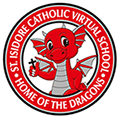Remote Learning Definitions (from Ministry of Education PPM 164)
Remote learning: Learning that occurs when classes are taught at a distance and when students and educators are not in a conventional classroom setting. Remote learning takes place in times of extended interruption to in-person learning – for example, as a result of a pandemic or natural disaster. Classes can be synchronous or asynchronous and can be taught online through a Learning Management System (LMS) or by using videoconferencing tools. In some cases, they may be delivered through emails, print materials, broadcast media, or telephone calls.
Synchronous learning: Learning that happens in real time. Synchronous learning involves using text, video, or voice communication in a way that enables educators and other members of the school- or board-based team to instruct and connect with students in real time. Synchronous learning supports the well-being and academic achievement of all students, including students with special education needs, by providing educators and students with an interactive and engaging way to learn. It helps teachers provide immediate feedback to students and enables students to interact with one another.
Asynchronous learning: Learning that is not delivered in real time. Asynchronous learning may involve students watching pre-recorded video lessons, completing assigned tasks, or contributing to online discussion boards.
